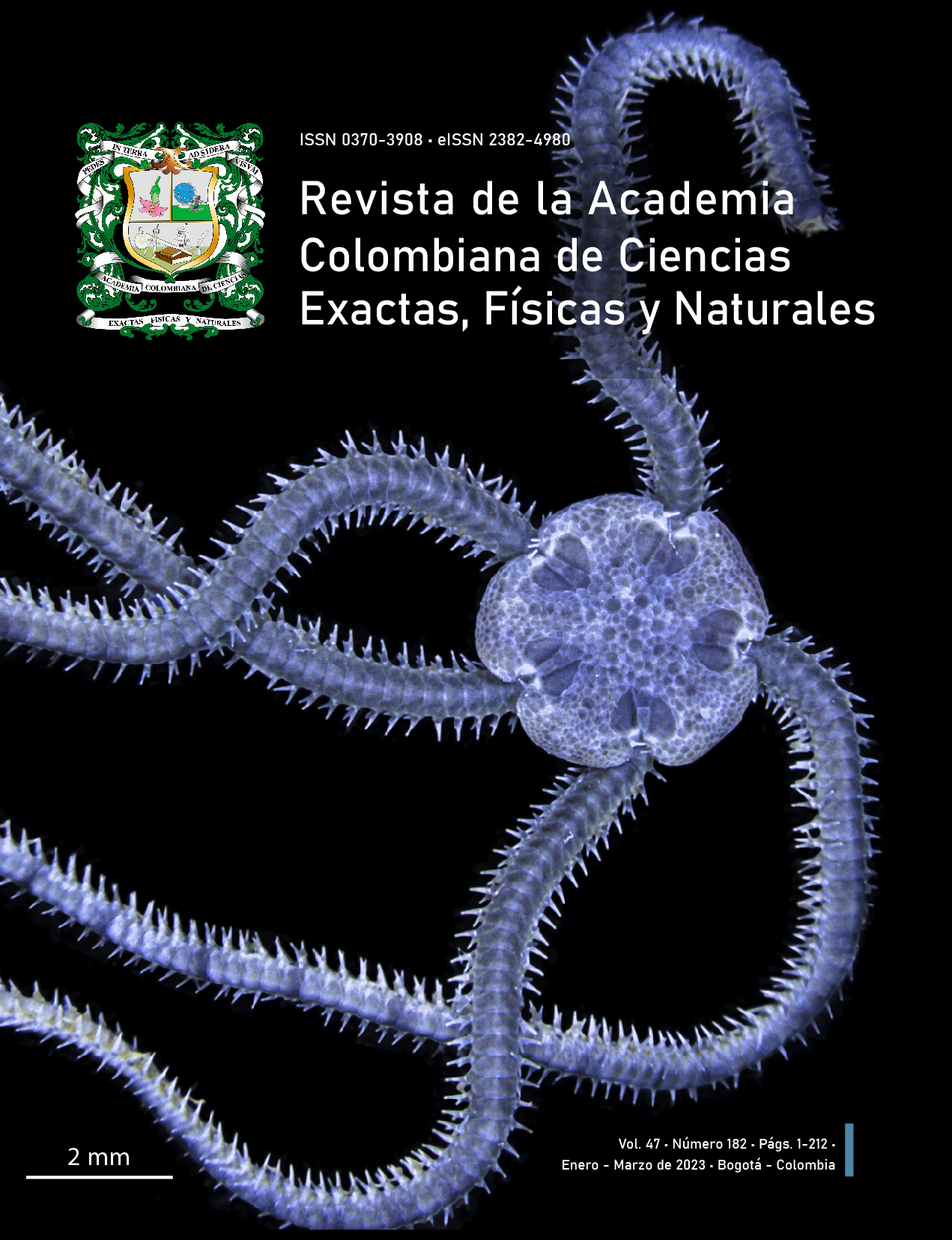Referencias
Barth, O.M. (1979). Pollen morphology of Brazilian Symplocos species (Symplocaceae). Grana, 18, 99‑107.
Fritsch, P.W., Manchester S.R., Stone, R.D., Cruz, B.C., Almeda, F. (2015). Northern Hemisphere origins of the amphi‑Pacific tropical plant family Symplocaceae. Journal of Biogeography, 42, 891‑901.
Luque, J. (2021). Parque crustácico: fósiles en ámbar y la salida de los cangrejos desde el mar durante el Cretácico. Revista de la Academia Colombiana de Ciencias Exactas, Físicas y Naturales, 45(177), 1277‑1279.
Rangel‑Ch. J.O., Suárez, C.A. (2023). Memoria técnica del Mapa de la vegetación natural de Colombia. MADS, ICN Universidad Nacional de Colombia, IDEAM, Instituto Humboldt, Instituto SINCHI, IIAP. 300 pp.
Sadowski, E.M., Hofmann, C.C. (2023). The largest amber‑preserved flower revisited. Scientific Reports, 13(17), 1-11.

Esta obra está bajo una licencia internacional Creative Commons Atribución-NoComercial-SinDerivadas 4.0.
Derechos de autor 2023 Revista de la Academia Colombiana de Ciencias Exactas, Físicas y Naturales

